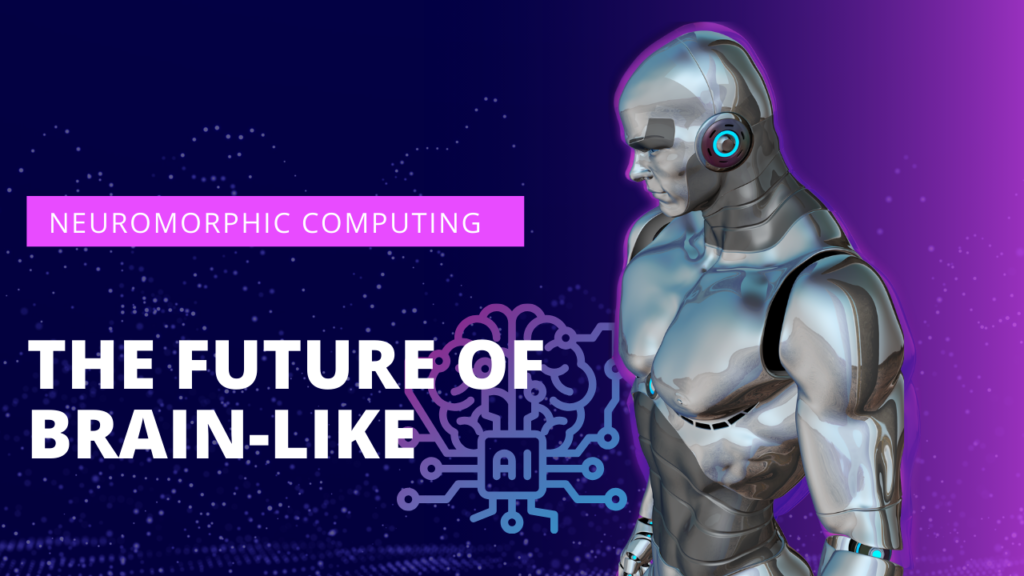Imagine an AI that doesn’t just process data like a conventional computer but thinks, learns, and adapts like the human brain. This is Neuromorphic Computing, a revolutionary concept where machines mimic the structure and functionality of biological neurons. It’s the next giant leap in AI—bringing intelligence that’s not just powerful but also efficient, flexible, and closer to human cognition.
Let’s explore how this cutting-edge technology works and why it’s poised to redefine the future of artificial intelligence.
🚀 What is Neuromorphic Computing?
Neuromorphic Computing is a field of AI and computer science that emulates the human brain’s architecture and processing mechanisms to create intelligent, energy-efficient computing systems.
🔑 Key Features of Neuromorphic Computing:
🧩 Brain-Inspired Structure – Instead of traditional processors, neuromorphic chips are made of artificial neurons and synapses that communicate like biological brains.
⚡ Ultra-Efficient Processing – Unlike traditional AI, which consumes massive power, neuromorphic systems perform computations using minimal energy, just like the human brain.
🧠 Self-Learning & Adaptability – Neuromorphic chips enable AI to learn from experiences, recognize patterns, and even develop intuition over time—without needing constant updates.
🚀 Extreme Speed & Parallel Processing – Since neurons work simultaneously, neuromorphic chips can process massive amounts of data instantly, making them ideal for real-time decision-making.
🔥 How Neuromorphic Computing Works
🏗 Brain-Inspired Architecture: The Building Blocks
🟡 Artificial Neurons & Synapses – Just like the human brain, neuromorphic chips use spiking neural networks (SNNs), where data is processed as electrical pulses (spikes), mimicking how real neurons communicate.
🟠 Event-Driven Processing – Unlike conventional AI that processes all data in bulk, neuromorphic systems only react to important events, making them highly energy-efficient.
🔵 Analog & Digital Hybrid Design – Neuromorphic chips combine analog computing (for brain-like efficiency) with digital computing (for precision), creating a new class of AI supercomputers.
🌟 Why Neuromorphic Computing is a Game-Changer
🏥 Revolutionizing Healthcare & Neuroscience
🧬 AI-Powered Brain Implants – Neuromorphic chips could help create advanced brain-machine interfaces (BMIs) for treating neurological disorders like Parkinson’s and epilepsy.
💊 Faster Drug Discovery – By simulating brain-like learning, neuromorphic AI can predict how new drugs interact with human neurons, accelerating medical research.
👁 Restoring Vision & Hearing – Neuromorphic AI can help develop bionic eyes and ears, allowing blind and deaf individuals to regain sensory abilities.
🚗 Advancing Robotics & Autonomous Systems
🤖 Human-Like AI Assistants – With neuromorphic computing, robots could perceive, learn, and think like humans, making them more adaptable in unpredictable environments.
🚘 Next-Gen Self-Driving Cars – Unlike traditional AI, which requires vast computing power, neuromorphic chips enable instant decision-making in autonomous vehicles, making them safer and more reliable.
🔒 Transforming Cybersecurity & AI Ethics
🛡️ AI That Understands Context – Neuromorphic AI could detect cyber threats by thinking like a hacker, making digital security more proactive and intelligent.
⚖ Bias-Free AI – By mimicking human intuition, neuromorphic computing may help create more ethical, less biased AI models that understand fairness and context better than traditional algorithms.
🌍 Solving Energy & Environmental Challenges
🔋 Ultra-Low Power AI – Traditional AI consumes vast amounts of electricity, but neuromorphic chips operate at just a fraction of the power, making AI greener and more sustainable.
☁️ Weather Prediction & Climate Modeling – With their ability to process complex, multi-dimensional data, neuromorphic computers can predict climate changes more accurately, helping fight global warming.
🏗 Challenges & Current Limitations
Although Neuromorphic Computing has immense potential, it still faces hurdles:
⚙ Hardware Development – Current semiconductor technology isn’t optimized for neuromorphic chips, slowing down large-scale adoption.
🧠 Understanding the Brain – Since we still don’t fully understand human cognition, perfectly mimicking brain functions in AI remains a challenge.
📡 Data Training & Compatibility – Traditional AI algorithms are built for digital systems, so creating new neuromorphic-friendly AI models requires significant research.
Despite these challenges, companies like Intel (Loihi), IBM (TrueNorth), and BrainChip (Akida) are already developing neuromorphic chips, bringing us closer to brain-like AI.
🔮 The Future of Neuromorphic AI: What’s Next?
🚀 Fully Autonomous AI – Imagine an AI that can think on its own, make decisions in real-time, and even create original ideas—Neuromorphic AI will make this possible.
🌐 Brain-Cloud Interfaces – Future AI assistants could connect directly to human brains, helping people enhance memory, learn languages instantly, or even control machines using just thoughts.
⚡ AI That Feels & Understands Emotions – Neuromorphic computing could lead to the development of empathetic AI that recognizes emotions and responds with human-like sensitivity.
🏗 Neuromorphic Supercomputers – The next generation of AI-powered supercomputers could process data as efficiently as a human brain, leading to unimaginable breakthroughs in science and engineering.
🎯 Final Thoughts: The Dawn of Human-Like AI
Neuromorphic Computing isn’t just about faster AI—it’s about smarter, more human-like intelligence. By mimicking the way our brains work, this technology has the potential to redefine industries, enhance human abilities, and unlock a new era of AI-driven breakthroughs.

